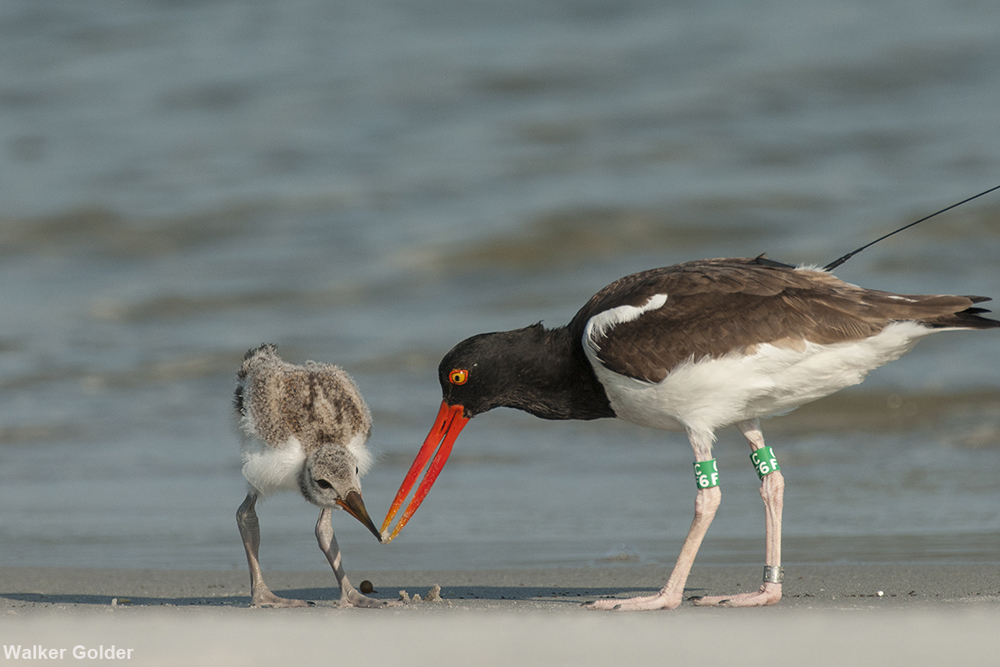Fowl 'Facebook' Tracks Birds for Science

The bird known as "UP" and his mate appear to have lost their only surviving chick, although they still have a chance to raise a young one this year. Things are brighter for Oreo and her mate;both are hard at work feeding their brood of three.
It's breeding season for shorebirds known as oystercatchers, and status updates from five birds on the North Carolina coast are coming in.
Photos, profiles and locations for these birds show up on a website that shares some similarities with the human social networking site Facebook. Audubon North Carolina established the site as part of an effort to better understand the birds' seasonal migration.
"We talked about wanting people to get to know the individual birds (since) all oystercatchers look alike," said Lindsay Addison, coastal biologist with Audubon North Carolina. "By having bands and tracking them, they become individuals." [Images: Life of a Shorebird]
Beach bird
This species, the American oystercatcher, is an eye-catching shorebird with a long, orange bill and a black head. In North America, the eastern variety lives along the Atlantic coast and the coast of the Gulf of Mexico. A western variety lives on the Pacific coast.
Around the year 1900, the population's range along the north Atlantic and Gulf coasts dwindled to just the mid-Atlantic states because of hunting and habitat loss, but the birds have returned to the coasts to the north and south, said project researcher Ted Simons, a biology professor with the USGS Cooperative Fish and Wildlife Research Unit at North Carolina State University.
Sign up for the Live Science daily newsletter now
Get the world’s most fascinating discoveries delivered straight to your inbox.
"Oystercatchers nest out on open beaches so they are affected by things that affect water quality and the beach environment," Simons said. "They are certainly affected by the loss of habitat because of coastal development and human recreation."
Mystery migrations
The American Oystercatcher Working Group has put bands with identifying codes on the birds' legs, so people can report sightings of individual birds. The results have revealed a piecemeal picture of the oystercatchers' migratory patterns. These appear to vary, with some birds making long trips of about 930 miles (1,500 kilometers) in spring and fall, some making much shorter trips and some not traveling at all, Simons said.
The project has fitted each of the five birds that it is monitoring with a backpack-like satellite transmitter that allows the researchers to track the birds' approximate location.
"From a scientific standpoint, we would like to fill in the details about the migratory pathways," Simons said. "Right now, we just have these little snapshots."
A better understanding of the routes and stopover sites the birds use could help conservationists better protect this species.
Meet the birds
As of Wednesday (June 19), just the five oystercatchers had been outfitted with backpack transmitters and profiles on Oystercatchertracking.org. Addison hopes to add a sixth shortly.
In selecting birds, researchers have sought to trap the animals from a variety of different types of habitat, such as those from a barrier islandand those from an island made of sediment dredged from a navigation channel, Addison said.
So far, two of the birds, Arnie and Oreo, have names; the others are known by the codes on their leg bands. Oreo nests on Wrightsville Beach, so fifth graders at a school in the community named her. Addison named Arnie.
Although the website refers to the birds as "he" or "she," researchers don't know the sex of the animals since males and females have identical plumage and carry their sex organs internally. Both sexes care for the eggs and chicks.
Follow LiveScience on Twitter@livescience. We're also on Facebook & Google+.










